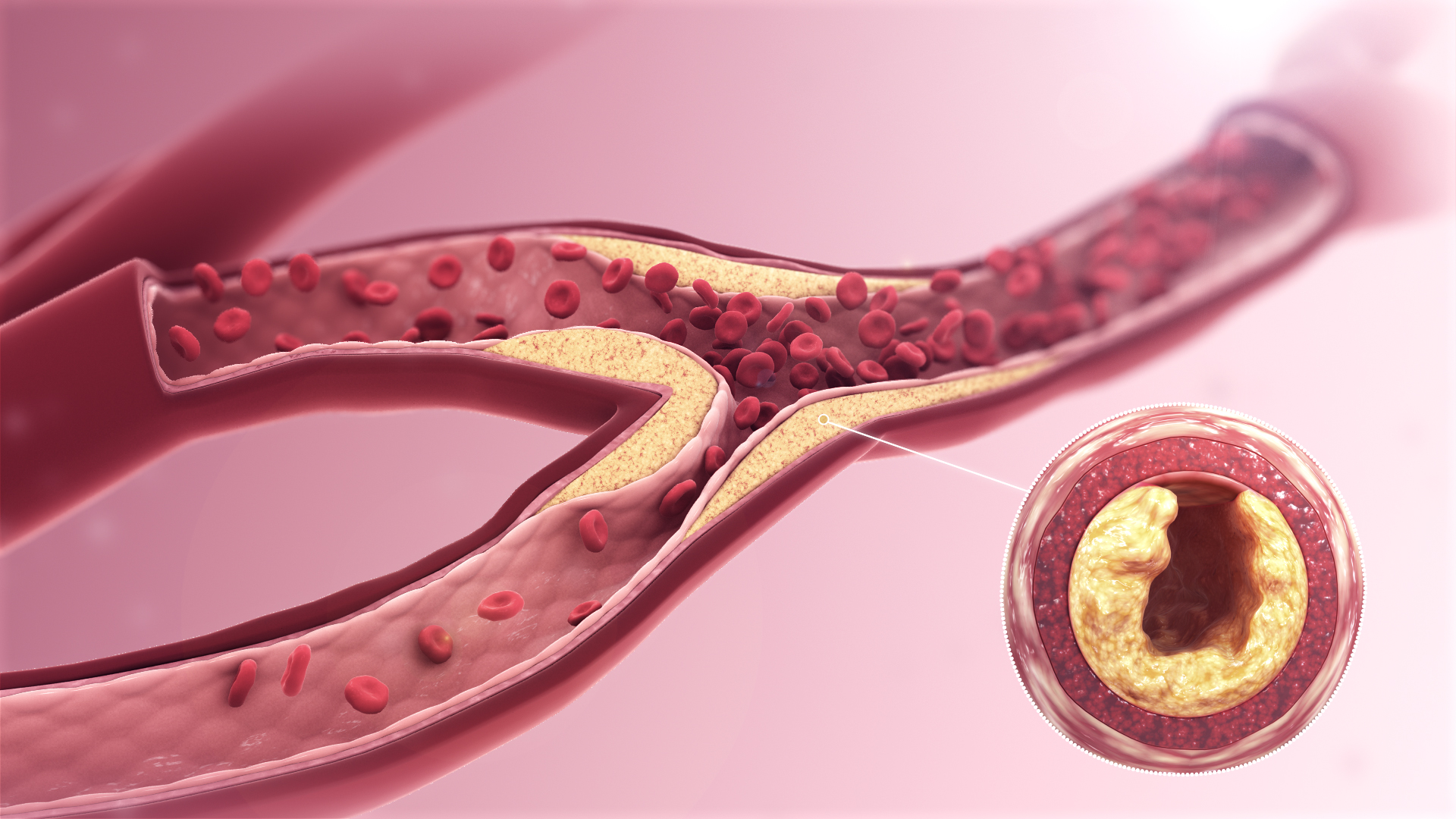The blood vessels that carry blood rich in oxygen to all the parts of the body from the brain to the toes are called arteries. When the arteries are healthy, the inner wall of the artery is smooth, enabling the blood to flow easily. When the build up of a substance called plaque takes place in the arteries, the arteries are clogged. The presence of plaque in the arteries clogs the arteries and can reduce the flow of blood or sometimes can block the flow completely. When the plaque deposits grow, the arteries get narrower and harden.
This condition is called atherosclerosis. The plaque is made up of various substances like calcium, fat , waste from cells in the body and cholesterol.

Clogged arteries create medical conditions depending on the location of the plaque build up. If the plaque build up in the arteries carrying blood to the heart, it causes coronary artery disease or commonly known as heart disease. If the plaque develops in the carotid arteries which supply oxygen to the brain, it can cause a stroke. Accumulation of plaque in the blood vessels that carry oxygen to the legs causes peripheral artery disease (PAD).
Symptoms
Many times clogged arteries do not often have much symptoms unless a major event such as a stroke happens. When there are symptoms, the most common ones in case of coronary artery disease are, nausea, weakness, sweating, dizziness, chest pain, palpitations and shortness of breath.
In case of carotid artery disease, the symptoms usually are, slurring of words, inability to move an arm or a leg, weakness or numbness on one side of the body and loss of vision in one side.
In peripheral artery disease, the clogged arteries cause symptoms like gangrene, pain in the legs, cold feet and delayed healing of leg injuries.
Causes
The causes of plaque build up are fat, calcium, cholesterol and waste from cells in the body. They result in narrowing and hardening of the arteries. The cause of clogged arteries is usually presence of high levels of bad cholesterol and low levels of good cholesterol, high blood pressure, smoking, diabetes, obesity, sedentary lifestyle and family history.
Treatment
The treatment of clogged arteries depends on the severity of the condition. It may be a combination of lifestyle changes, surgical procedures and medications. Lifestyle changes would include:
- Having a diet which is low in fat, cholesterol, sugar and simple carbohydrates and rich in fruits, vegetables and whole grains
- No smoking
- Exercising regularly
- Managing stress
- Keeping a control over blood pressure, sugar and cholesterol levels
Surgical procedures usually include bypass surgery, balloon angioplasty and stent placement depending on the severity of the condition.
Medications commonly include drugs that lower cholesterol, blood pressure and blood thinners which reduces the risk of clot formation.
Clogged arteries may lead to various life threatening complications and can often be prevented by eating a diet which is healthy for the heart, exercising regularly, managing stress levels and keeping cholesterol and blood pressure within normal limits.
Disclaimer: The information in no way constitutes, or should be construed as medical advice. Nor is the above article an endorsement of any research findings discussed in the article an endorsement for any of the source publications.
Sources-
- https://www.webmd.com/heart-disease/clogged-arteries-arterial-plaque
- https://www.medicalnewstoday.com/articles/321238.php
- https://www.mayoclinic.org/diseases-conditions/coronary-artery-disease/symptoms-causes/syc-20350613
Arterial blockage is a primary suspect in heart attacks. The internet is replete with advice on how to prevent arterial blockage; but how do doctors fix your vessels once they are already blocked. Well, the inside of your arteries may not look like the Taj Mahal, but it is fixed in much the same way.
Read More..
It’s fascinating how cardiology medical animations can reflect even the minutest of details of the heart so beautifully. We’ve been catering to this therapeutic area for a long time and have created some fascinating cardiology animations and virtual reality tours.
Read More..











